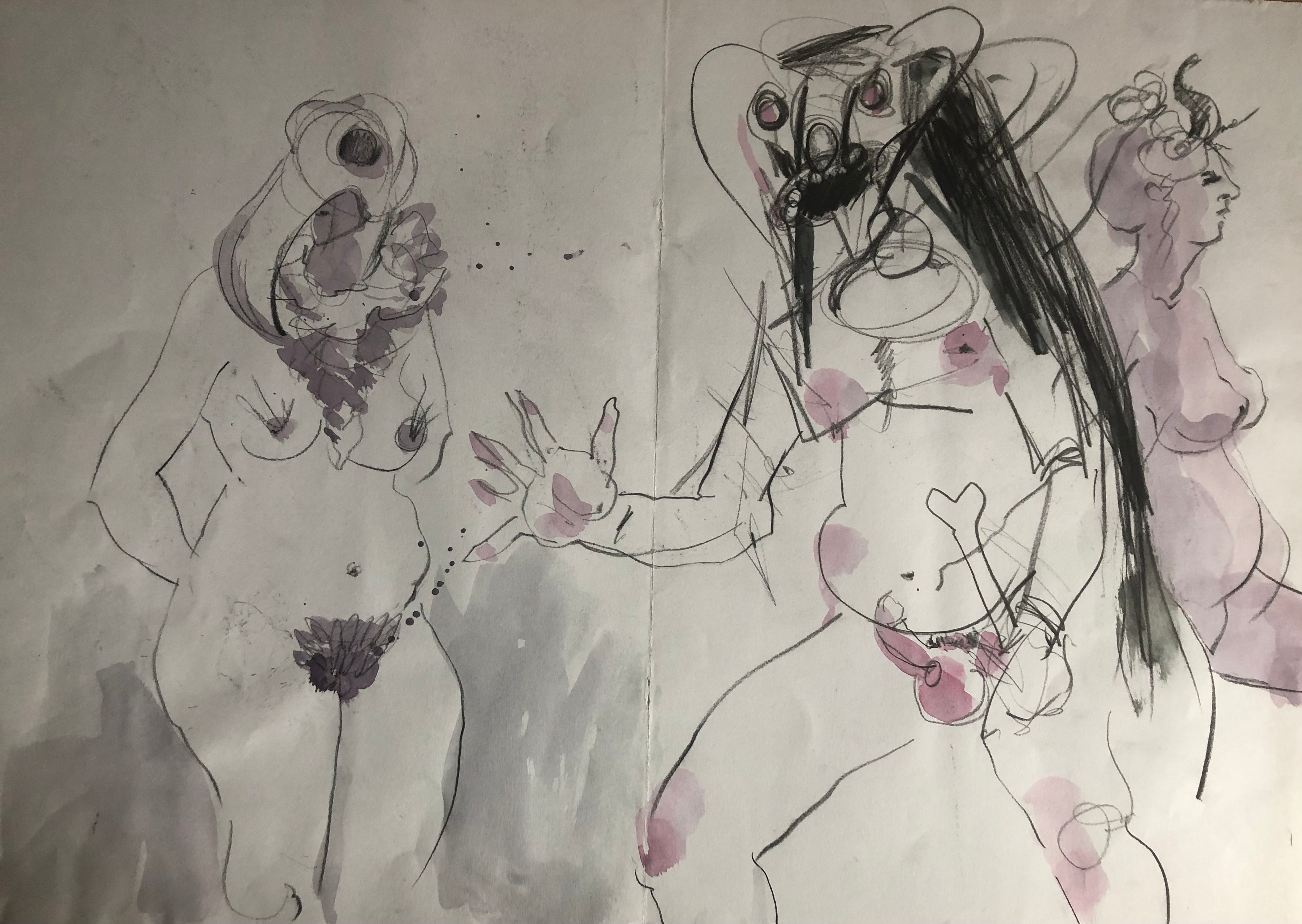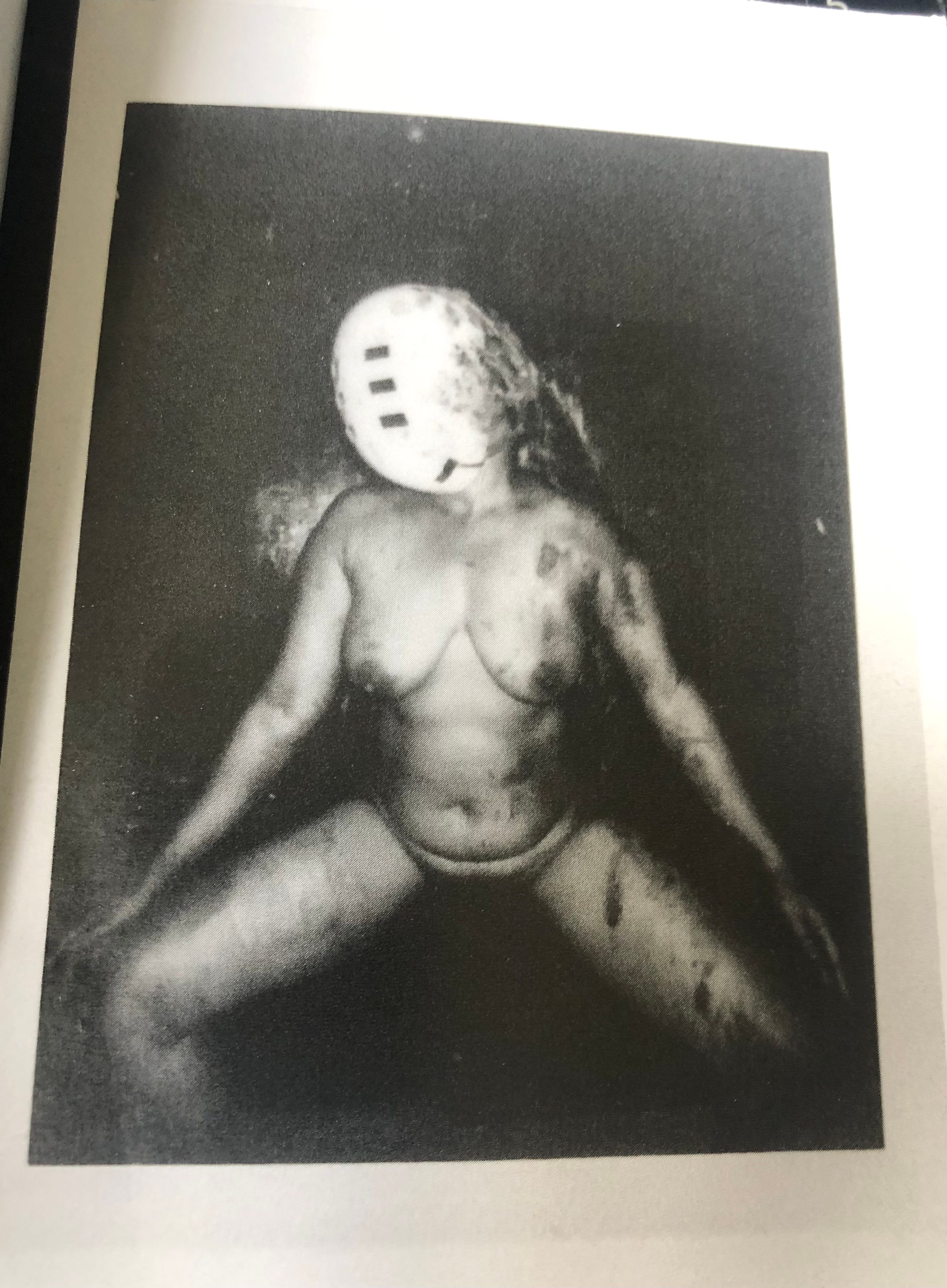Artist Spotlight: Farida Yesmin
We catch up with Axis Fellowship cohort member, Farida Yesmin, to chat about their work, and to get an exclusive look at their latest performance piece 'Blissful Sorrow'.
Tell us a bit about yourself and your practice, how would you describe the work that you do?
My name is Farida Yesmin. I am from Bangladesh. Currently living in Folkestone.
Through my work, I engage with Eastern and Western cultural expressions, as a woman, as an artist and as an immigrant. My practice is shaped through human rights, feminist politics, processes of decolonisation. It is also shaped by my current home, its landscapes and the proximity to the sea. The work I produce is in parallel to my lived experience of trauma in the asylum process, homelessness, and as a survivor of gender based violence. My work negotiates barriers of language whilst staging my “otherness”, expressed through performance using my body, gestural mark making, painting and voice.
In Bangladesh I studied Fine Art at Dhaka University (1998) and have a Master’s degree from Visva-Bharati University in West Bengal India (2003). Despite the extreme personal barriers I have faced, I strive to develop and amplify my practice, my networks and connections.
Since migrating to the UK, my work has been championed and showcased at Creative Folkestone, Conversation Over Borders, Performance Space, Tempting Failure London Biennial of International Performance Art, Counterpoints Arts, Refugee Week, Artsadmin and WIP project, The Photographers' Gallery.

You recently performed the piece, Blissful Sorrow, as part of 'Last Fridays' a Creative Folkestone event. Could you tell us more about this work and some of the ideas that inspired you to develop it?
The main ideas I had when developing my latest performance were traps. My whole life feels like a trap. The same for my mum, her life was a trap. She had eight children, a brother and a husband, and she died at 60. Everyone just thought that she died because she was old, but really she died because she didn't have any care. This is a typical Bengali story, it's a really common thing. Society doesn't care, it's not important for them, but still people die, still women die.
Using the flag frames it as a political and cultural issue, using my experience of Bangladeshi culture.
I was interested in the body as an abstract lump underneath the flag. At the beginning it doesn't look human. You can see the landscape and the sea, and the waves, and this lump as part of it, something that eventually becomes more human, but still something that's hidden. I've approached similar things in my other performances using masks.

You often use the nude body within your performance work. Can you tell us more about this decision?
I haven't ever seen anyone from Bangladesh doing nude work - using the body or nude life drawing. It's not part of the culture. I feel as though I can do it because I live with myself, but I know my sisters would complain, and my ex husband would control me and tell me not to do it. Here I feel more confident and brave to explore this work.
I feel the way society treats women is as if they have no clothes - they are naked. I found a truth in using the naked body, a very vulnerable presence. I can communicate my true experience through this art language.
I used to post this work so that people in my country can see the difference overseas. I'm still learning about British culture. What is the punk thing? What is LGBTQ? What is Britain's pagan story? I feel as though there's more truth here.
Interestingly in this performance piece your body remains hidden under the flag, could you tell us more about this decision?
When I first started thinking about this performance I imagined that my nude body would come out from underneath the flag to show that I have overcome my barrier. I don't know what the future holds for me, but my life is totally different from the lifestyle I used to live. But this is not Blissful Sorrow. Blissful Sorrow is a deep pain that hasn't healed itself. It's all the other stories that are hidden. We never come out. I think Bengali women need another 200 years for their stories to come out.
You’ve mentioned previously that you’re interested in developing this flag performance into multiple iterations. Can you tell us more about these plans?
I want to continue with this flag project in three parts - maybe in the next one I will come out. I'm interested in the idea of a post-mortem, cutting, sewing, and investigating the cause of death. I was also inspired by our cohort member, Charlotte Cullen, who has created all of these scars on her metal sculpture work. It spoke to me straight away because I also have scars and traumatic memories. For the third part I would like to bury the Bengali flag in a wild place.
Alongside your performance work, you also do a lot of life drawing and landscape watercolours. How does this part of your art practice differ from your performance work?
People are always looking for what can make them happy. Mostly I was very sad throughout my life, but I think unconsciously I was looking for that happiness. After my divorce I gave up my art practice. I didn't have the resources.
When I first moved here I was trying to survive and learn English. One day I accidentally ended up in an art shop and saw a sketch book and some fliers for a life drawing course. I didn't have any money but I wanted to do that. At this time my living situation was very precarious. I used to clean the house of an old Anglo-Indian man for a little bit of money, which I would spend on the life drawing classes. He was kind at that time and helped me. He respected me and the fact I was an artist.
I found it very addictive, and I felt happy. People in these bad situations get addicted to alcohol or other stuff. I never had that in my life, but I was addicted to drawing and how it made me feel. I still am. My performance work is often about trauma, but drawing and painting just makes me happy.
Finally, for anyone thinking of applying for this year's Fellowship, can you tell them how it has been useful to your practice?
This has been a gift for me, it's my first experience of a Fellowship. All artists are struggling to get work, and everyone deserves to be able to develop their practice. I never felt as though I would have time to develop my practice but the Fellowship has given me the time to focus on my artwork. This is a great opportunity and it will hopefully open the gate to other opportunities. It's unbelievable, it's a dream!
Tags, Topics, Artforms, Themes and Contexts, Formats
Share this article
Helping Artists Keep Going
Axis is an artist-led charity supporting contemporary visual artists with resources, connection, and visibility.


